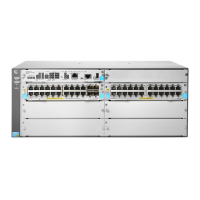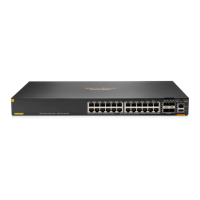16
No. Attribute Description
61 NAS-Port-Type
Type of the physical port of the NAS that is authenticating the user.
Possible values include:
• 15—Ethernet.
• 16—Any type of ADSL.
• 17—Cable. (With cable for cable TV.)
• 19—WLAN-IEEE 802.11.
• 201—VLAN.
• 202—ATM.
If the port is an ATM or Ethernet one and VLANs are implemented on it,
the value of this attribute is 201.
64 Tunnel-Type Tunneling protocols used. The value
13
represents VLAN.
65 Tunnel-Medium-Type
Transport medium type to use for creating a tunnel.
For VLAN assignment, the value must be
6
to indicate the 802 media plus
Ethernet.
79 EAP-Message
Used to encapsulate EAP packets to allow RADIUS to support EAP
authentication.
80
Message-Authenticato
r
Used for authentication and verification of authentication packets to
prevent spoofing Access-Requests. This attribute is present when EAP
authentication is used.
81
Tunnel-Private-Group-I
D
Group ID for a tunnel session. To assign VLANs, the NAS conveys VLAN
IDs by using this attribute.
87 NAS-Port-Id String for describing the port of the NAS that is authenticating the user.
Proprietary RADIUS subattributes (vendor ID 25506)
Table 4 lists all RADIUS subattributes with a vendor ID of 25506. Support for these subattributes
depends on the device model.
Table 4 RADIUS subattributes (vendor ID 25506)
No. Subattribute Description
1 Input-Peak-Rate Peak rate in the direction from the user to the NAS, in bps.
2 Input-Average-Rate Average rate in the direction from the user to the NAS, in bps.
3 Input-Basic-Rate Basic rate in the direction from the user to the NAS, in bps.
4 Output-Peak-Rate Peak rate in the direction from the NAS to the user, in bps.
5 Output-Average-Rate Average rate in the direction from the NAS to the user, in bps.
6 Output-Basic-Rate Basic rate in the direction from the NAS to the user, in bps.
15 Remanent_Volume
Total amount of data available for the connection, in different units for
different server types.
17 ISP-ID ISP domain where the user obtains authorization information.
20 Command
Operation for the session, used for session control. Possible values
include:
• 1—Trigger-Request.
• 2—Terminate-Request.
• 3—SetPolicy.
• 4—Result.
• 5—PortalClear.

